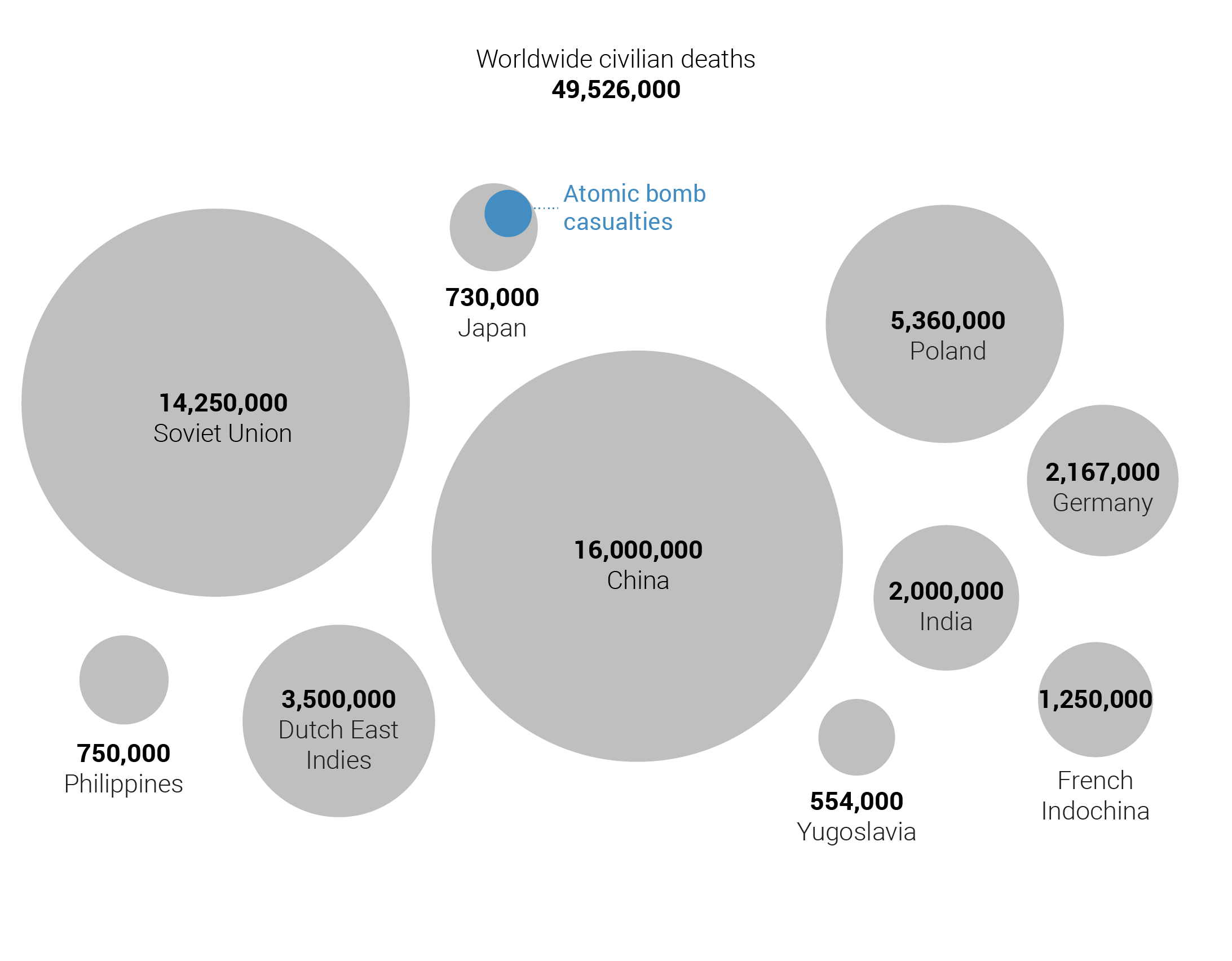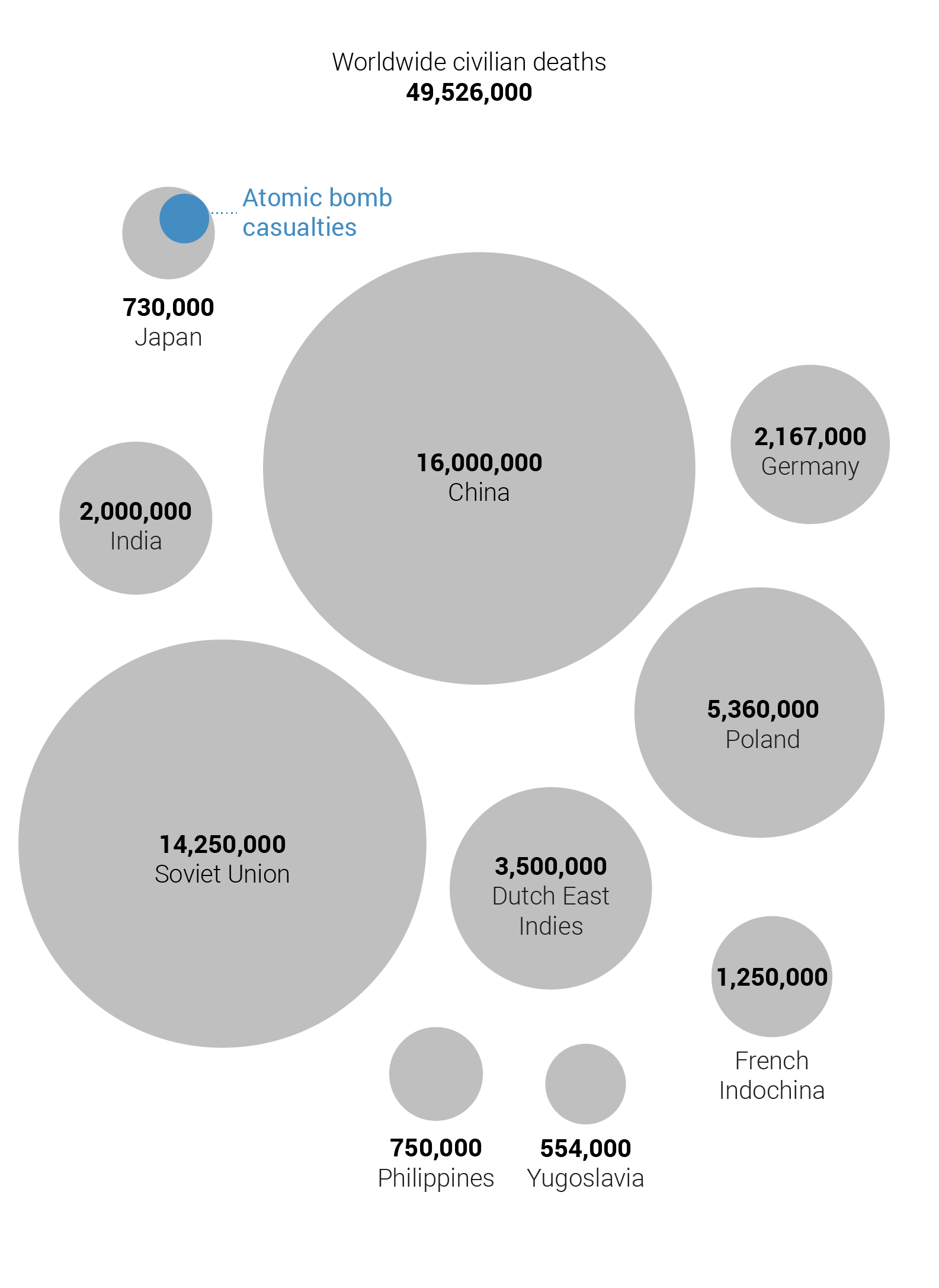Eighty years ago, on August 6 and 9 in 1945, the Japanese cities of Hiroshima and Nagasaki experienced the destructive force of the world’s first atomic bomb attacks. Two American bombs caused the deaths of tens of thousands and unleashed widespread devastation.
These events occurred in the final throes of World War II, following a long and brutal campaign by Japan in China and across Asia that resulted in millions of civilian deaths, injuries, and widespread atrocities. In Hong Kong alone, at least 10,000 civilians were killed.
 Scroll down
Scroll down
These events occurred in the final throes of World War II, following a long and brutal campaign by Japan in China and across Asia that resulted in millions of civilian deaths, injuries, and widespread atrocities. In Hong Kong alone, at least 10,000 civilians were killed.
 Scroll down
Scroll down
The US decision to bomb Japan twice was made against a backdrop of a Japanese military government that, despite the war’s clear conclusion, was determined to keep fighting. This refusal to accept an unconditional surrender was a key factor in the US strategy to force a swift end to the conflict and avoid a costly ground invasion.
In the wake of the two bombings, Japan’s Emperor Hirohito announced his nation’s surrender on August 15, 1945, ending the Pacific War. This came after Germany had surrendered in Europe on May 7.
In the wake of the two bombings, Japan’s Emperor Hirohito announced his nation’s surrender on August 15, 1945, ending the Pacific War. This came after Germany had surrendered in Europe on May 7.
This infographic utilises the symbolic origami crane, a Japanese symbol associated with peace and remembrance, to depict the human cost of the atomic bombings.
Each stamp features 100 crane silhouettes, with each silhouette representing one casualty.
Hiroshima and Nagasaki
Visualising the human toll from the world’s first nuclear attacks
Hiroshima
August 6, 1945
8.15am
August 6, 1945
8.15am
The US B-29 bomber Enola Gay dropped a uranium-based bomb nicknamed “Little Boy” over Hiroshima. This was the first atomic bomb ever used against a civilian target.
The city's population was
approximately 350,000.
approximately 350,000.
Within a 1.2km radius of the hypocenter, an estimated
70,000
people were killed or missing and presumed dead on that day.
70,000
people were killed or missing and presumed dead on that day.
Hiroshima’s prefectural health department
estimated causes of death at:
estimated causes of death at:
Nagasaki
August 9, 1945
11.02am
August 9, 1945
11.02am
Three days after Hiroshima, the US B-29 bomber Bockscar dropped a plutonium bomb dubbed “Fat Man” over Nagasaki, a city of 240,000 people.
An estimated
40,000
people were killed instantly.
40,000
people were killed instantly.
Throughout the rest of 1945 and subsequent years, casualties continued to mount, with radiation exposure leading to widespread cancer cases and chronic diseases among survivors.
Approximately 93% of doctors and nurses (1,834) were killed in the explosion.
Only three out of 45 civilian hospitals remained operational, critically limiting first-aid and rescue efforts in the immediate hours.
This lack of medical infrastructure exacerbated casualties.
This lack of medical infrastructure exacerbated casualties.
Over 80% of Nagasaki's hospital capacity was destroyed.
At the Nagasaki Medical College (0.6km from the hypocenter), almost 30% of medical staff and 600 out of 850 medical students perished.
An estimated 7,200 students,
mobilised for wartime demolition work, were killed in Hiroshima.
mobilised for wartime demolition work, were killed in Hiroshima.
About 200 Hiroshima
railroad employees also died.
railroad employees also died.
112 out of 115
streetcar company employees also died;
no streetcars operated in Nagasaki until mid-November 1945.
streetcar company employees also died;
no streetcars operated in Nagasaki until mid-November 1945.
In total, more than
38,000
children died in both cities.
38,000
children died in both cities.
During World War II, many Korean nationals in Japan were subjected to forced labour. While the exact figures remain unknown for those killed in the atomic attacks:
An estimated
20,000
died in Hiroshima.
An estimated
10,000
died in Nagasaki.
An estimated
20,000
died in Hiroshima.
An estimated
10,000
died in Nagasaki.
By the end of 1945, nearly
140,000
people had died in Hiroshima.
And around
74,000
people had died in Nagasaki.
140,000
people had died in Hiroshima.
And around
74,000
people had died in Nagasaki.
The precise number of atomic bombing casualties in both cities remains impossible to ascertain.
This is due to the massive destruction of civilian infrastructure and immediate post-explosion confusion. Japanese censuses before 1945 were not considered complete.
In destroyed buildings, bodies were burned beyond recognition.
Corpses and body parts were disposed of through mass cremations during the first week of recovery.
Those who survived the initial blast were driven out of cities to die or recover.
Even years after the bombings, radiation exposure caused long-term health effects and additional casualties among survivors.
Leukaemia cases began to rise approximately two years after the attacks, peaking between four and six years later. For other cancers, the increased risk linked to radiation began to emerge about a decade post-exposure.
One notable survivor was
Sadako Sasaki.
Sadako Sasaki.
The two-year-old was having breakfast with her family approximately 1.7km from the hypocenter, when the Hiroshima bomb detonated.
Ten years later, she began to show symptoms of leukaemia.
During her time in the hospital, Sadako was inspired by the Japanese legend that a wish would be granted if a person folded 1,000 paper cranes.
Sadako died in 1955 at the age of 12, surrounded by family with 1,300 origami cranes hanging overhead in her room.
Civilian casualties by country in World War II


Methodology
For this project, our team of four spent 12 hours in the studio animating the visualisation. We used a 60cm x 60cm white paper and three identical stamps. Following the design where each stamp features 100 crane silhouettes, the paper was marked 2,140 times, resulting in 214,000 visualised cranes. The total markings symbolise the estimated number of casualties in Hiroshima and Nagasaki.